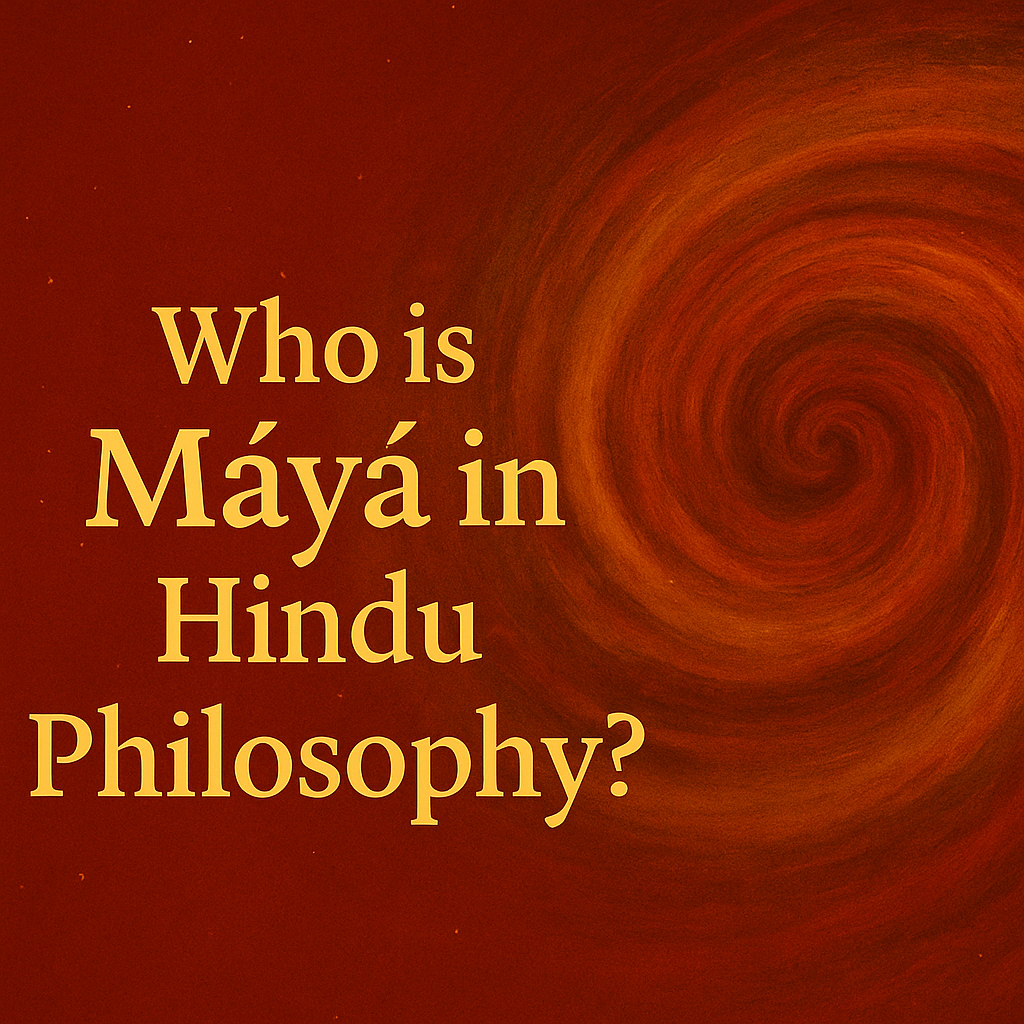In Sanskrit, Māyā (माया) means illusion, magic, or that which is not what it seems. But Maya isn’t just a trick or deception—she is a divine power, closely associated with Shakti (the Goddess, the creative energy of the universe).

In Sanskrit, Māyā (माया) means illusion, magic, or that which is not what it seems. But Maya isn’t just a trick or deception—she is a divine power, closely associated with Shakti (the Goddess, the creative energy of the universe).
Everything we see—our bodies, thoughts, emotions, the entire universe—is shaped by Maya.
🔹 Example: Just like a movie appears real on screen but is made of light and images, Maya makes the world feel real, though it's ever-changing and temporary.
Maya causes attachment to:
This keeps us bound in the cycle of: Birth → Life → Death → Rebirth (Samsara) We forget our true Self (Atman) and think we are the body or mind. That illusion is Maya’s play.
Maya is not a demon or enemy. In fact, she is part of the divine design. Her purpose is to:
Through spiritual practice, wisdom, and inner awareness, we can recognize Maya and rise above her illusion.




🧘 Answer: Māyā is the divine illusion or cosmic power that makes the eternal, unchanging Brahman appear as the changing, physical universe. It's what causes the soul to mistake the body and world for reality, hiding our true spiritual nature.
🧘 Answer: Not quite. Māyā doesn't mean the world is completely false—it means it’s relatively real. Like a dream feels real while you're in it, the world is real until you awaken to your higher Self.
🧘 Answer: No. Māyā isn’t good or bad. It is neutral energy—a divine tool of the universe. While it can trap us in ego and suffering, it also provides the stage for spiritual growth and liberation.
🧘 Answer: In Shaktism, Māyā is none other than the Goddess herself—Mahāmāyā Durga. In Vedanta, it is the power of Brahman, and in Shaivism, it is Shiva’s Shakti.
🧘 Answer: Māyā manifests as:
Attachment to the body and possessions
Desire, ego, fear, and comparison
Belief that we are separate from others or God
Running after temporary pleasures or goals
🧘 Answer: Māyā creates the illusion of individuality, leading us to act based on ego and desire. These actions generate karma, which keeps the soul bound in the cycle of birth and rebirth (samsara).
🧘 Answer:
Jnana (Wisdom): Realizing “I am not this body or mind.”
Bhakti (Devotion): Surrendering to God/Goddess beyond illusion.
Meditation: Detaching from illusion and centering in the Self.
Seva (Service): Acting selflessly breaks ego's grip.
🧘 Answer: In many traditions—yes. Especially in Shakta philosophy, Māyā is the creative aspect of Shakti, the Divine Mother who both veils and reveals the truth.
🧘 Answer: For an enlightened person, Māyā may still appear, but they see through it—like seeing a magician’s trick after knowing how it's done. It no longer binds or deceives them.
🧘 Answer: From a divine perspective, Māyā makes possible the dance of life, allowing the One to experience itself as many—joy, love, struggle, and awakening. It’s the Leela (divine play) of the universe.
Comments
We often live without truly knowing who we are, where we came from, or where we are meant to go. Life is more than just existence—it’s a path to realignment with the light. Through awareness, the right actions, and conscious choices, we can break free from distractions and reconnect with our higher purpose.
Discover the wisdom that guides us toward clarity, purpose, and true fulfillment. 🌿
Lorem Ipsum is simply dummy text of the printing
Copyright © 2025 birthtorebirth – All Rights Reserved.
0
Comments